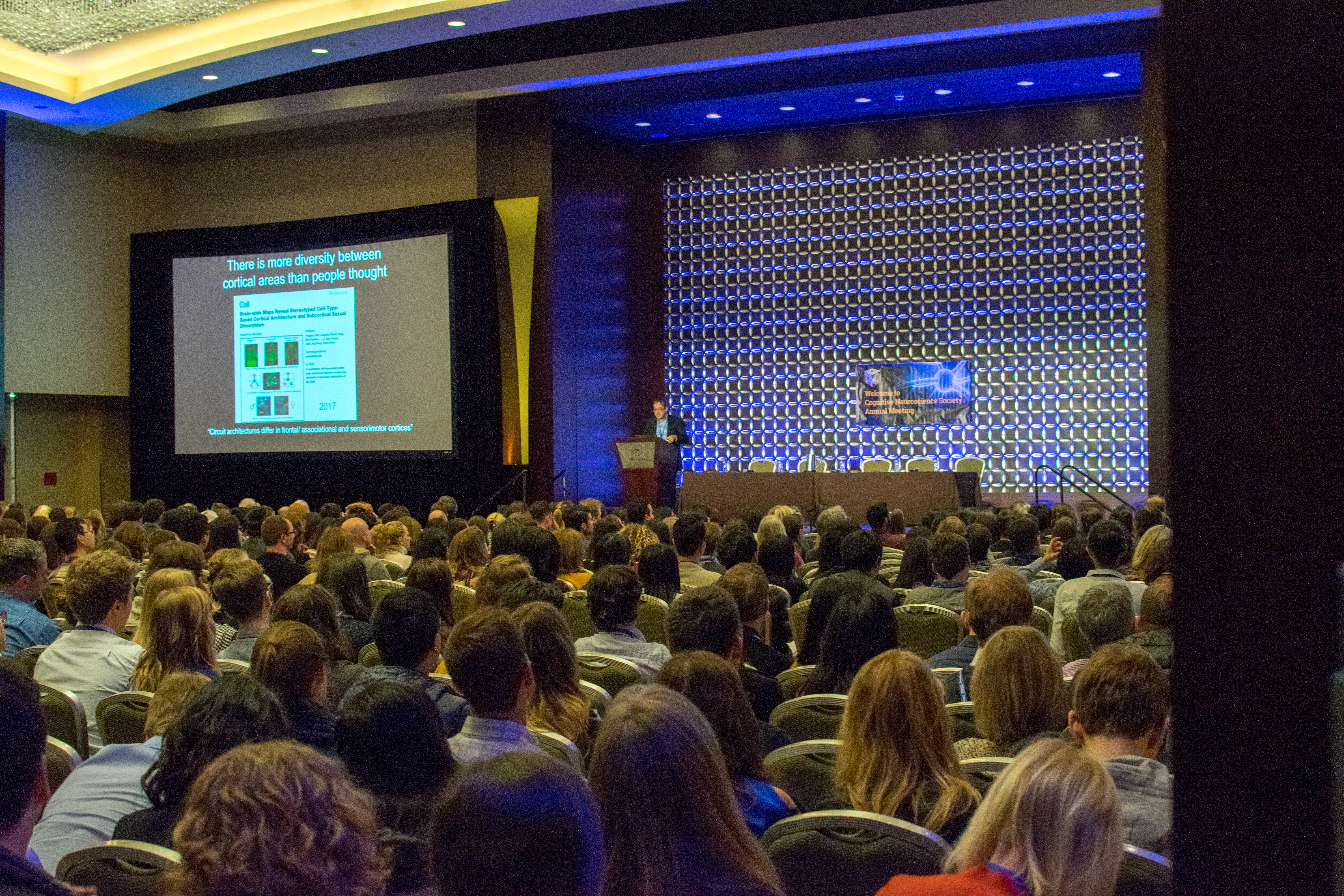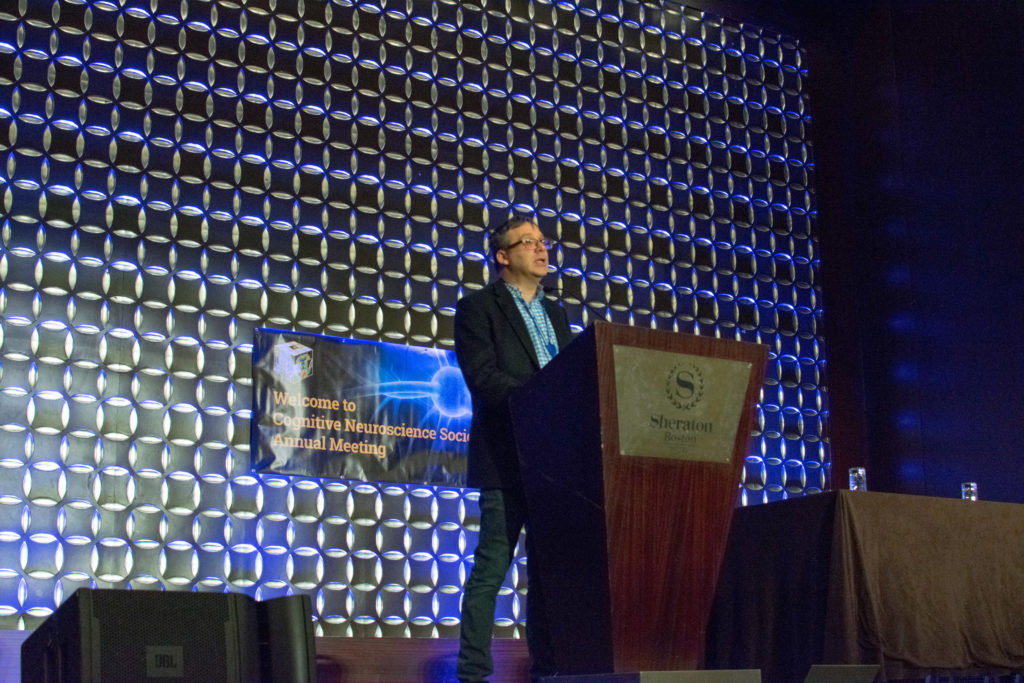Boston hosts 25th Cognitive Neuroscience Convention
March 27, 2018
The Cognitive Neuroscience Society held its annual four-day meeting at the Boston Sheraton last weekend, attracting hundreds of researchers from around the world to share their latest findings in the field.
At the start of each day from Saturday to Tuesday, the Sheraton’s exhibit halls hosted a poster session where researchers from universities and companies were invited to present their most recent discoveries. Jim D. Herring is a researcher from the University of Amsterdam in the Netherlands and his research was one of more than 100 on display.

“My research is ongoing,” Herring said. “I’m working on linking the unconscious to human memory, and presenting my research here has put me into contact with a lot of people who can really help me take it further.
While some came to develop their research, others came to sell it. Martina Ly is the technology business consultant at ANT Neuro, a Dutch corporation that sells research equipment and programming. To her, the exhibit hall is where all the action happens.
“I look forward to this convention,” Ly said. “Besides telling people about our products, I love walking around and looking at all the research. You get a clear image into where the field is going and how researchers can work together to get the best results.”
Ly was joined by Alexander Arteaga, a support engineer at ANT Neuro. Together, they were showcasing the latest technology in EEG, or electroencephalography, a monitoring system that records the brain’s electrical activity. EEGs are commonly used to diagnose cognitive issues like epilepsy, sleep disorders and dementia.
During EEG monitoring, patients usually have to wear headgear prepared with a gel that will help pick up activity from the brain. Ly said the prep can take up to half an hour. ANT Neuro’s exhibit advertised new technology in EEG that does not require any gel, making the setup a much quicker process: The 30-minute preparation time becomes four minutes.
“EEG research can be tedious to set up,” Arteaga said. “This makes it a lot easier. Depending on the kind of work that needs to be done, this might be exactly what researchers have been looking for.”

ANT Neuro has been part of the exhibit hall for more than a decade, and this year marked the convention’s 25th anniversary. Following the exhibit hall presentations, convention participants made their way to the Sheraton’s Grand Ballroom for hours of panels and talks from the world’s leading figures in cognitive neuroscience. Among the speakers were David Poeppel and Elizabeth Phelps, renowned professors of psychology at New York University. The two participated in various speaking events throughout the weekend.
Before giving the keynote address, Michael Gazzaniga, a professor of psychology at University of California, Santa Barbara and the director of the SAGE Center for the Study of the Mind, congratulated the Cognitive Neuroscience Society.
“This convention has been elemental in the development of much research, mine included,” Gazzaniga said. “It’s amazing to see it in its 25th year.”
The first day of the convention focused on the debate between the application of theory and the use of data, spurring dialogue across the hotel that took a deep dive into the nuances of research. The days that followed only grew in intricacy and involvement, making the convention a place where researchers could come to talk about anything in their field.
Monday and Tuesday were almost exclusively dedicated to panels and talks, and the issues ranged from the abstract study of unconscious thought to the concrete and physiological understanding of threat control in the brains of animals.
By the end of the fourth and final day, attendees had access to more than 75 talks from various experts and 20 hours of exhibition time.
“I’d call it a tremendous success. I’m leaving with hope for the continuation of my research, with a ton of new connections and with new knowledge,” Herring said during Tuesday’s final talk. “I’m looking forward to next year.”
Correction: An earlier version of this story contained an erroneous caption, it has since be updated to reflect that Gary Marcus is the speaker in the featured image.







